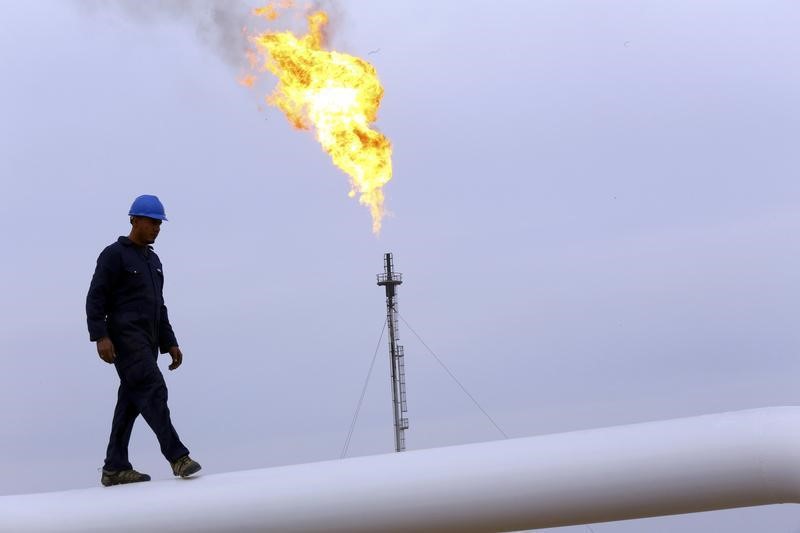Investing.com — OPEC+ might not like what it’s seeing but as the saying goes: “It is what it is.”
A month after the creative production maneuver by the oil producing alliance that got a barrel up by about $10 or more, crude prices had shifted direction again and were headed deeper into red territory as fears of a possible U.S. debt default added to weak factory data in the world’s largest economy.
Both U.S. crude and global oil benchmark Brent were down almost 5% in Tuesday’s morning trade in New York, following the slump in stocks, after Treasury Secretary Janet Yellen said the U.S. government could run out of money within a month.
New York-traded West Texas Intermediate, or , for June delivery settled down $4, or 5.3%, at $71.66 per barrel.
WTI could break $70 support next though a sharp rebound is also likely due to oversold conditions, Sunil Kumar Dixit, chief technical strategist at SKCharting.com, said.
“As short time frames turn oversold, a reactive bounce back from the lows can hardly be ruled out which may cause some recovery towards $74.00 and even $75.70,” said Dixit. “Nonetheless, the 200-week Simple Moving Average of $67.00 remains a potential destination wide open.”
London-traded for July delivery, meanwhile, finished Monday’s session down $3.99, or 5%, at $75.32.
“OPEC+ will surely hate how oil prices have turned again in just a month but that’s what the reality is,” said John Kilduff, partner at New York energy hedge fund Again Capital. “The economy’s always a greater concern, especially if there’s a potential debt default at hand.”
Since this week began, WTI has lost 6%, adding to the 1.2% decline from last week and another 6% drop from the prior week. Brent was nursing a 5% drop on the week after last week’s 2.6% decline and the prior week’s 5% slump.
In terms of absolute pricing, WTI had gone from a high of $83.53 in days after the OPEC+ production maneuver to Monday’s session low of $71.44. Brent went from a peak of $86.90 to the latest session low of $75.09.
OPEC+, which groups the 13-member Saudi-led Organization of the Petroleum Exporting Countries with 10 independent oil producers, including Russia, said it will cut a further 1.7 million barrels from its daily output, adding to an earlier pledge from November to take off 2.0M barrels per day.
OPEC+, however, has a history of over-promising and under-delivering on production cuts. While the group achieved over-compliance on promised cuts in the aftermath of the 2020 coronavirus breakout, experts say that was more a result of battered demand that led to minimal production, rather than a will to cut barrels as pledged.
The cost of insuring against a U.S. default hit fresh highs after Yellen said on Monday that the Biden administration might not meet all payment obligations by “early June,” prompting the president to summon four top congressional leaders to the White House next week.
Adding to the concerns over a debt default were latest readings on U.S. and durable goods that came in lower than expected.
for March, meanwhile, fell as layoffs and discharges rose, the Labor Department reported.
One relief for not just the oil market but risk investors in general might come from signs that the Federal Reserve will pause on its more than one-year of rate hikes after another quarter-point increase on that will leave U.S. rates at a peak of 5.25% versus inflation trending at 4.0-5.0%.
Read the full article here











